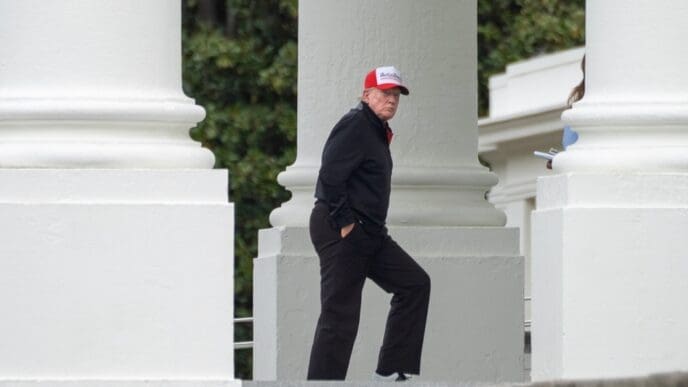In rural Louisiana, amidst crawfish farms, pine trees, and cafes serving po’boys, nearly 7,000 individuals await decisions at immigration detention centers regarding their potential expulsion from the United States. The Trump administration is aiming to significantly expand the nation’s immigration detention capabilities, possibly increasing the capacity to accommodate tens of thousands more migrants across the country. This initiative aligns with the president’s campaign pledge to intensify deportations, presenting both opportunities for private prison companies and challenges for government agencies tasked with managing the systematic removal of immigrants.
Critics argue that the administration’s expansion plans may include intentional measures to isolate detainees by situating them far from legal assistance and support structures. The acting director of the Immigration and Customs Enforcement (ICE), Todd Lyons, recently suggested at a border security conference in Phoenix that the deportation process should be streamlined, akin to a commercial delivery system, highlighting the logistical complexities involved in managing global deportations.
With ICE actively seeking to increase its capacity from the current 41,000 beds to 100,000, the agency has invited bids on contracts to run various detention centers nationwide, potentially amounting to $45 billion. While the funding is not yet secured, contracts are already being awarded. The House narrowly passed a spending bill allocating $175 billion for immigration enforcement, a substantial increase from ICE’s existing budget.
Currently, overcrowding affects many detention facilities, including those in Miami, with over 46,000 individuals held across more than 100 centers. Recently, ICE awarded a $3.85 billion contract to Deployed Resources LLC for operating a detention camp at Fort Bliss Army base in Texas. This company is transitioning from managing Border Patrol tent encampments to operating facilities for deportees. Other significant contracts have been awarded to Geo Group Inc. and CoreCivic Inc., each securing lucrative deals to manage facilities in New Jersey, Michigan, and Texas.
Louisiana, despite its low immigrant population and non-bordering status, ranks second nationwide for immigration detention space. The state’s attractiveness for such facilities stems from low labor costs, favorable political conditions, and the availability of repurposed jails. Legislative changes in 2017 reduced the demand for prison spaces, prompting rural areas to welcome detention contracts as economic opportunities.
The strategic location of detention centers in Louisiana leverages conservative federal courts, which pose obstacles for detainees challenging their detention conditions or appealing court rulings. This strategic placement allows ICE to influence the judicial environment of its cases. The majority of Louisiana’s detention centers are located in rural areas, distant from the major cities where legal and advocacy support is more accessible. This isolation has been a longstanding concern for detainees, who cite difficulties in accessing family and legal resources.
The introduction of video conferencing for immigration court proceedings has provided some relief from these challenges, although critics argue that it fails to fully address the issues of detainee isolation and inhumane conditions. Legal advocates, like those at Immigration Services and Legal Advocacy, emphasize the importance of in-person court appearances for significant hearings, despite the logistical challenges posed by remote detention locations.
The expansion of detention facilities under the Trump administration continues to spark debate and protest, as advocacy groups like Detention Watch Network highlight the negative impact on detainees and challenge the broader implications of increased detention capacity.









